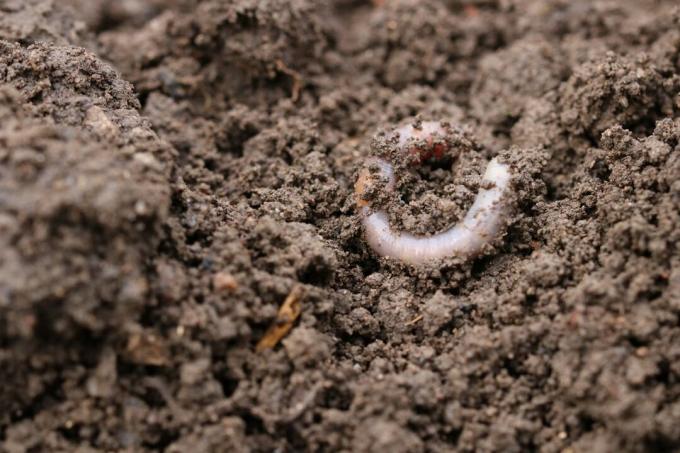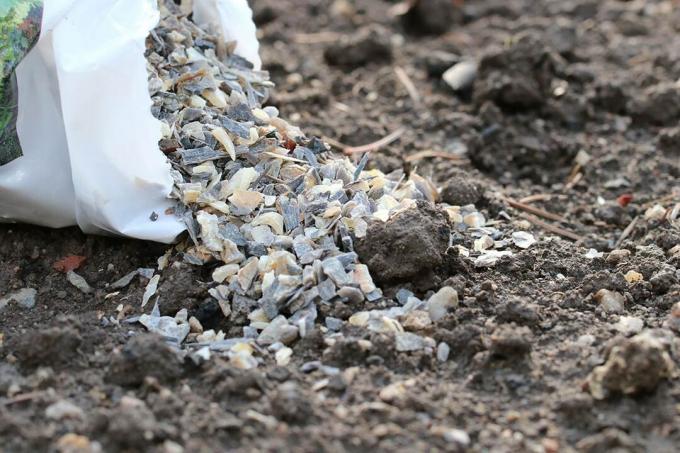

Table of contents
- differences and requirements
- Mix the substrate yourself
- components
- loosening
- mixing and timing
- Control: pH
Potting soil differs greatly from other substrates, as plants in planters have special requirements. The soil can also be better adapted to the needs of the plant species by making it yourself.
differences and requirements
The substrate requirements of potted plants differ from those of outdoor plants in several respects. This is the case because significantly less volume of earth is available.
Because this results in some potential dangers, such as:
- little space for the root mass
- higher risk of tipping
- higher risk of waterlogging
- smaller water storage
- fewer microorganisms
- less nutrients
Because of these potential issues, it is crucial that the potting soil meets the following requirements:
- good strength
- good water storage
- high permeability
- high nutrient content
Mix the substrate yourself
Mixing potting soil yourself instead of buying ready-made potting soil or potting soil has a number of advantages. This includes, among other things:
- exact adaptation to the demands of the plants
- peat-free soil can be mixed
- often lower costs than earth from the trade
In addition, with the right knowledge, the procedure is very simple and does not take much time.
components
The soil for potted plants should consist of one part each of the following components:
- mature compost
- fresh, good quality garden soil
- Xylitol or coconut fiber for loosening
Peat can also be used as an alternative to coconut fiber or xylitol. However, peat extraction has a negative impact on the environment. It is therefore advisable not to use this natural addition and to ensure that the ready-made potting soil is peat-free. In addition to these three basic ingredients, other substances should be added.
loosening
The following are suitable for further loosening and the supply of water and nutrients:
- Coarse sand, such as quartz sand (50 to 100 grams per five liters of soil)
- wood chips
- chaff
- sawdust
- wood fibers
- lime
- horn meal

Which other components are useful for increasing the nutrient content depends on the one hand on the requirements of the plant. On the other hand, the pH value plays an important role, which can be influenced with the substances mentioned.
Tip:
Even if the potting soil is ideally put together, it makes sense to add drainage to the planter. This can consist of potsherds or larger stones and prevents the roots from standing in the water.
mixing and timing
In order for the potting soil to be the ideal basis for healthy growth, it must be mixed well and allowed to mature for a while. This results in various advantages:
- even distribution of nutrients
- multiplication of microorganisms
- reliable measurement of the pH value
It is optimal to put together the soil from the various components in autumn and to mix it well. This makes it ideal for repotting in spring. It is also good to shake them again before replacing the substrate or to mix them up with a shovel from top to bottom.
Control: pH
The pH can be basic, neutral or acidic. However, not every plant tolerates every area. It is therefore crucial that the substrate is adapted to the respective requirements of the plant.
This is possible, among other things, by adding lime or horn meal, for example. But coffee grounds, lemon peel and other fertilizers also have an effect. A measuring device or a test kit can be used to determine the current pH value.

The advantage of the measuring device is that the analysis is quick and easy. In addition, simple models are already available very cheaply. The analysis sets require a little more effort, but are also inexpensive to buy.
A notice:
A sample of the well-mixed soil can also be examined in specialist shops. This eliminates your own effort. In the long run, however, the variant is more expensive.
 garden editorial
garden editorial I write about everything that interests me in my garden.
Learn more about floor care

Digging up the garden: 13 tips for lawns and beds
Whether it makes sense to dig up beds or lawns is discussed in different ways. Once you have decided on this measure, our tips will help you to organize work in the garden effectively.

Pine bark: suitable for which plants?
Pine bark is a type of mulch that is gaining popularity among many garden owners due to its color and properties. Before purchasing, the question often arises as to which plants the bark mulch is suitable for. This question is justified because of the origin of the pine.

Which soil to choose for elephant foot?
The right substrate is crucial for the elephant's foot and should therefore be chosen well. Read here which soil is best suited for the Beaucarnea recurvata!

Expanded clay as a water reservoir: The alternative to earth?
Expanded clay is known to many as a substrate for hydroponics or as drainage in pots. Due to its properties, the clay granulate is suitable as a substrate in many different areas and can replace soil. The granules have long been an indispensable basis for green roofs.

pH value in the soil: 15 tips for measuring & regulating
If the pH of the garden/plant soil is suboptimal, this can lead to serious plant damage. We show what options there are for measuring and regulating.

What is potting soil? Make pricking soil yourself
Young plant soil is used to grow vegetable plants or flowers from seeds. Sometimes it is also suitable for herbs. You can buy them in garden shops. However, it is not difficult to make pricking soil yourself. How to do this is in this post.



